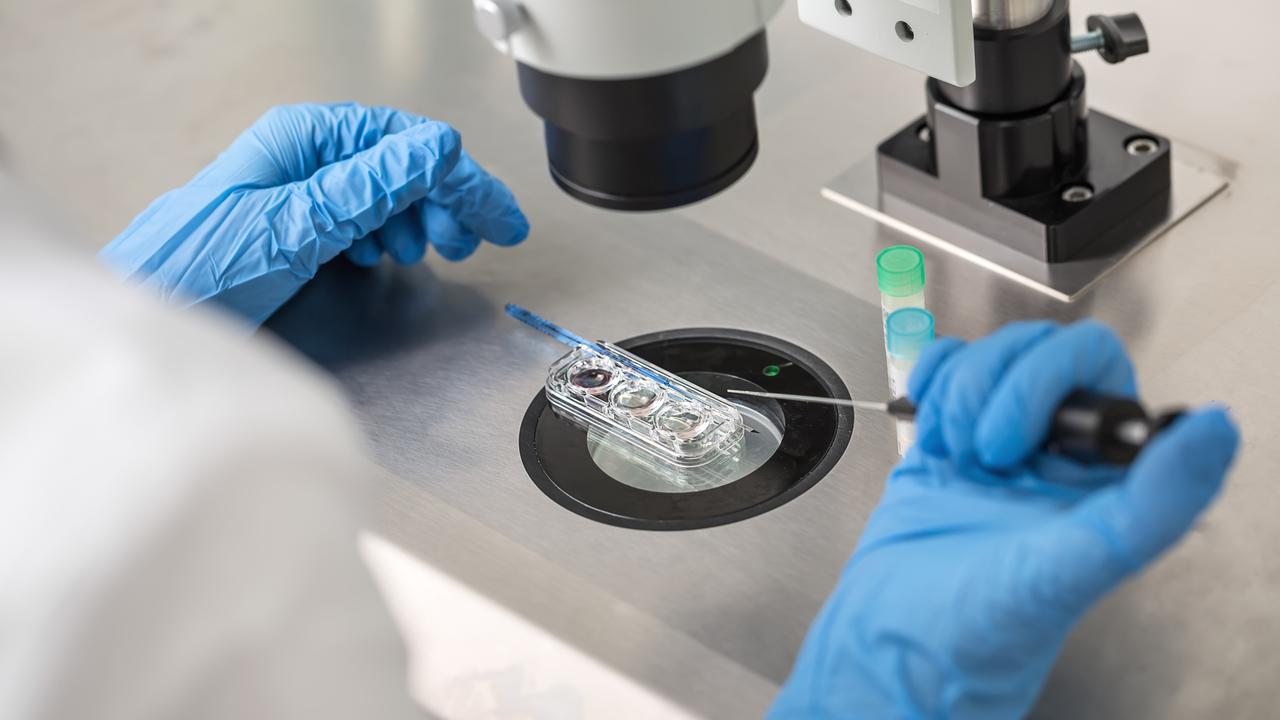Monash group leads pilot project offering hope for mitochondrial disease
Australian IVF researchers have, for the first time, been given the green light to create babies using the DNA of three people – and it may be a lifesaver.
Victoria
Don't miss out on the headlines from Victoria. Followed categories will be added to My News.
Up to 56 babies a year will be conceived using the DNA of three people.
This “triangle conception”, an Australian first, will take place through a pioneering technique known as mitochondrial donation.
It means that in future, babies may not only be saved from inheriting a debilitating and potentially deadly mitochondrial DNA disease, they will also not pass it on to their own children.
Mitochondria are tiny powerhouses within cells. Their DNA is inherited from the mother via the egg, and supports biological processes.
Sadly, when genetic mutation or damage occurs, it leads to serious health problems for children such as brain damage, muscle wasting, heart failure, blindness, and possible early death.
One child is born every week in Australia with the disease.
The revolutionary mitochondrial donation technique is being investigated by researchers across the country and led by a Victorian team at Monash University in collaboration with the Murdoch Children’s Research Institute.

It involves implanting the mother’s nuclear DNA retrieved from her egg into a healthy donated egg from which the nuclear genes have been removed.
The egg is then fertilised by sperm and implanted back into the mother using IVF.
Most of the baby’s DNA comes from its two parents and about 0.1 per cent from a third, the donor woman.
Catherine Mills, a professor of bioethics at Monash University, is leading the patient and public engagement arm of a research project launched in Melbourne this week called MitoHOPE.
She says Australia is the second country in the world to allow this IVF technique using the DNA of three people.
Asked if it could also be used to eradicate other genetic diseases, Professor Mills said the technique was focused on replacing mitochondrial disease.
“Current legislation means it can only be used to treat that, not for other purposes,” she said.
In March federal Health Minister Mark Butler announced funding of $15m for MitoHOPE, a five-year research and pilot program that will test the safety and efficacy of mitochondrial donation.
Women across the country are now being recruited both as frozen egg donors and those wanting to use the donation technique.
The research team is a national consortium that includes Monash Bioethics Centre at Monash University, Monash IVF, Monash Health, Monash Women’s and the University of Adelaide.
The team behind mitoHOPE now are hoping that women who have unwanted frozen eggs in storage will consider donating to the pilot project to help other women have families.
For more visit monash.edu/medicine/mitohope
Originally published as Monash group leads pilot project offering hope for mitochondrial disease







